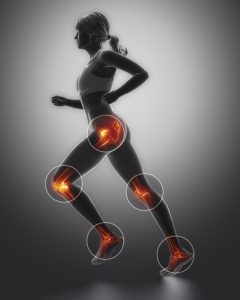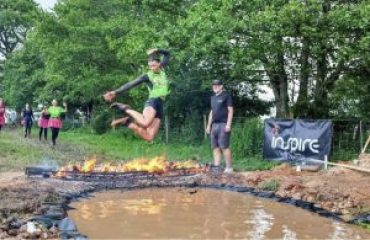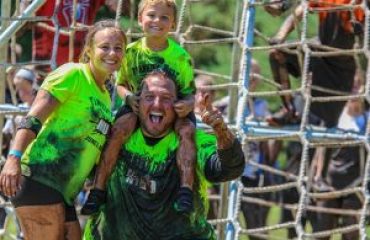Your habits can make you or break you. This is not only in life but also in how you move.
The body is great at moving to allow you to function…but sometimes to your detriment.
Look at any toddler or young child, and you will see them perform a great squat – weight on the heels with the butt below the knees – and be able to hang out there for long periods of time while playing. Watch the same child run, and you see nearly perfect running form. But that doesn’t last forever; things begin to change by the time the teenage years approach.
These changes can occur for a number of reasons. The big three are “natural” progression, learned patterns, and past injuries.
“Natural” Progression
As you become more sedentary throughout life – sitting in school, sitting in jobs, sitting in commutes, sitting to relax in
the evening – areas of the body begin to get tight and stiff. Without realizing it, you stop challenging the full range your body is able to move and instead begin to move in shortened ranges. You don’t realize you are no longer squatting down to get things from the floor but instead are bending forward. You think you are getting your arms up overhead like you used to, but you aren’t. You start rotating your body to check your blind spot when driving rather than just your head.
The small regressions of the body occur over time; it’s a slow process, so you don’t realize it even happens until all of a sudden you can’t do something you want to do or you develop pain.
Learned Patterns
Many things that we do in life are done the way those around us did them. Think about the way you do simple tasks such as washing the dishes, cleaning, or cooking. Are they done the same way your roommate, significant other, or spouse do them or are they like your parents did them when you were growing up?
The way we move is no different. We learn how to do things from watching the people around us. How many times were you in the backyard as a kid and attempting to throw, kick, run, jump, etc. just like your favorite athlete? In the same way, the way you have learned to move in your day to day life and in the gym is likely from things you have learned from watching other people as well. Unfortunately, when you are watching your parents or other people at the gym, you don’t actually know if the way they are moving is proper movement or not. You just pick up that they are being successful with what they are doing at that moment so you begin to do it as well.
Past Injuries
The body is great at compensating without you realizing it. When you have an injury, your body will do what it can so you can continue to function in your normal tasks and activities. This results in you moving a little differently than you were before. After just a short time – a couple weeks – that new movement pattern becomes “normal” to your brain, resulting in you continuing to move that way even after the injury is resolved. Many times, the compensation pattern is very subtle so it is often not picked up on until it results in an injury.
The Why
Why is all this important? Because the improper, habitual movements you have created will many times result in injuries. These habitual movements place increased stress and strain on your joints and soft tissues. Over time, the body says, “enough is enough” and creates pain so you can address the situation.
Here’s where the tricky part comes in. The pain you are experience is the symptom of how you are moving. The pain is the easy part to fix. The why is the part that is not so easy to fix. The why involves retraining habits that you have had for years, and most likely decades. It is teaching your body to move in what feels like a very unnatural and abnormal way to move because your body has been telling itself for years that the other pattern is normal.
And the most important thing to remember in all this. If you only take the time to do the quick fix and address the pain that is present, the injury you are experiencing (or perhaps a different injury) will occur again in the future. The problem is never fixed until you address the why behind it.
Written by Brianne Showman. Brianne is a physical therapist and running coach with Get Your Fix Physical Therapy And Performance. Her focus is on helping athletes resolve injuries in less time by getting to the root of the problem, improving movement patterns, and incorporating proper training to help the body to move more efficiently, more powerfully, and in less injury-prone ways.










